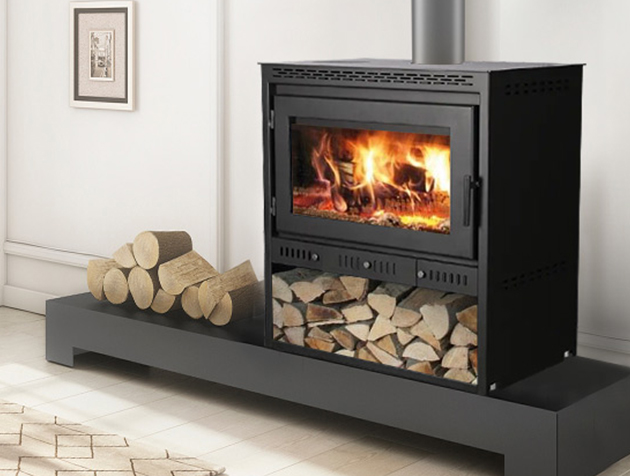A freestanding fireplace is a self-contained heating unit that does not require installation into a wall or structure. These fireplaces are designed to sit on the floor and can be placed anywhere in a room, providing both warmth and aesthetic appeal. They can run on various fuel sources, including wood, gas, or electricity, offering flexibility depending on the user’s preference.

Freestanding fireplaces are available in several styles and sizes, making them an option for both large and small spaces. Some models are purely decorative, offering the ambiance of a fire without providing significant heat, while others are highly functional, providing significant warmth for a room.
Types of Freestanding Fireplaces
There are several types of freestanding fireplaces, each with its own set of benefits and considerations. The common types include:
1. Wood-Burning Freestanding Fireplaces
Wood-burning freestanding fireplaces are traditional and rustic in design. They provide the classic crackling sound and smell of burning wood, making them a popular choice for homeowners who enjoy the authenticity and ambiance of a real wood fire.
Design and Features: These fireplaces typically consist of a metal or cast iron structure with a firebox, chimney, and flue to vent smoke safely. They may come with glass doors or open fronts, allowing users to enjoy the view of the fire.
Fuel: As the name suggests, wood-burning fireplaces use logs or wood pellets as fuel. They require regular maintenance, including cleaning the ash and ensuring that the chimney remains clear of obstructions.
Use Cases: Ideal for both indoor and outdoor use, wood-burning freestanding fireplaces are often used in living rooms, cabins, or patios. They offer a natural heat source and are good for creating a cozy, traditional ambiance.
2. Gas-Powered Freestanding Fireplaces
Gas freestanding fireplaces provide the convenience of instant heat and a clean flame without the hassle of chopping wood or dealing with ash. They run on either natural gas or propane, making them ideal for modern homes or apartments that want the look and feel of a traditional fireplace without the mess.
Design and Features: Gas fireplaces are often designed with sleek, contemporary styles in mind, with many models featuring realistic-looking flames and even embers that mimic a wood fire. These units can be placed anywhere in the home and require only a gas connection and proper venting.
Fuel: Gas fireplaces run on natural gas or propane, and they do not produce smoke or ash. Some models feature remote controls for easy operation, while others have adjustable flame settings for controlling heat output.
Use Cases: Gas-powered freestanding fireplaces are commonly used in both indoor and outdoor spaces. They are a great choice for modern homes, apartments, or areas where venting a traditional wood-burning fireplace would be impractical. They offer fast, efficient heating with minimal upkeep.
3. Electric Freestanding Fireplaces
Electric freestanding fireplaces are the user-friendly and versatile option available. These fireplaces do not require any venting or fuel, as they operate entirely through electricity, making them easy to install and maintain. They are typically designed to be decorative but can also provide a source of supplemental heat.
Design and Features: Electric fireplaces come in various designs, ranging from sleek, modern styles to traditional looks. Many models feature LED lights that simulate realistic flame effects, and some even include built-in heaters for added warmth. Some advanced models include features like adjustable flame brightness, remote control, and even sound effects that mimic the crackling of fire.
Fuel: Electric fireplaces run solely on electricity, meaning they do not produce any smoke, fumes, or emissions. They are often equipped with a fan-forced heater that provides warmth, although they tend to be less powerful than wood-burning or gas options.
Use Cases: Electric freestanding fireplaces are good for homeowners or renters who want the ambiance of a fireplace without the need for installation or maintenance. They are ideal for smaller rooms, apartments, or areas where venting a traditional fireplace would be difficult. These units also work well in spaces where additional heat is needed but not a large amount.








